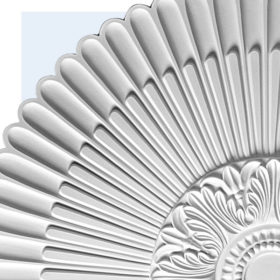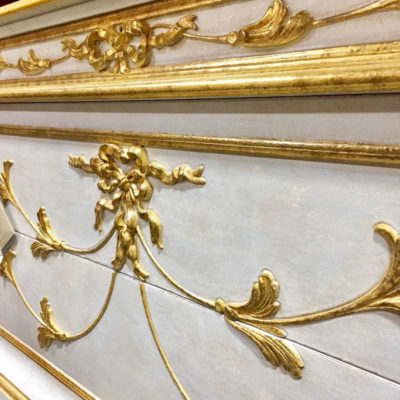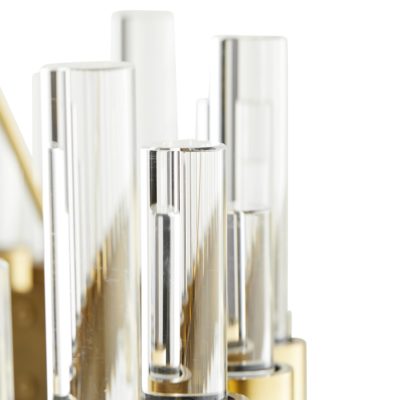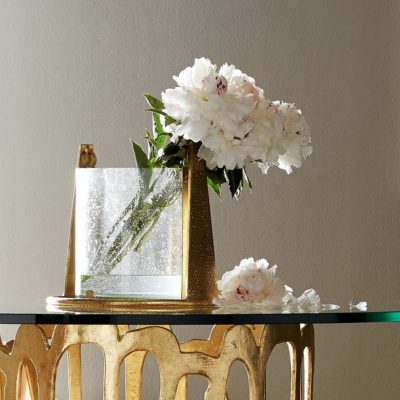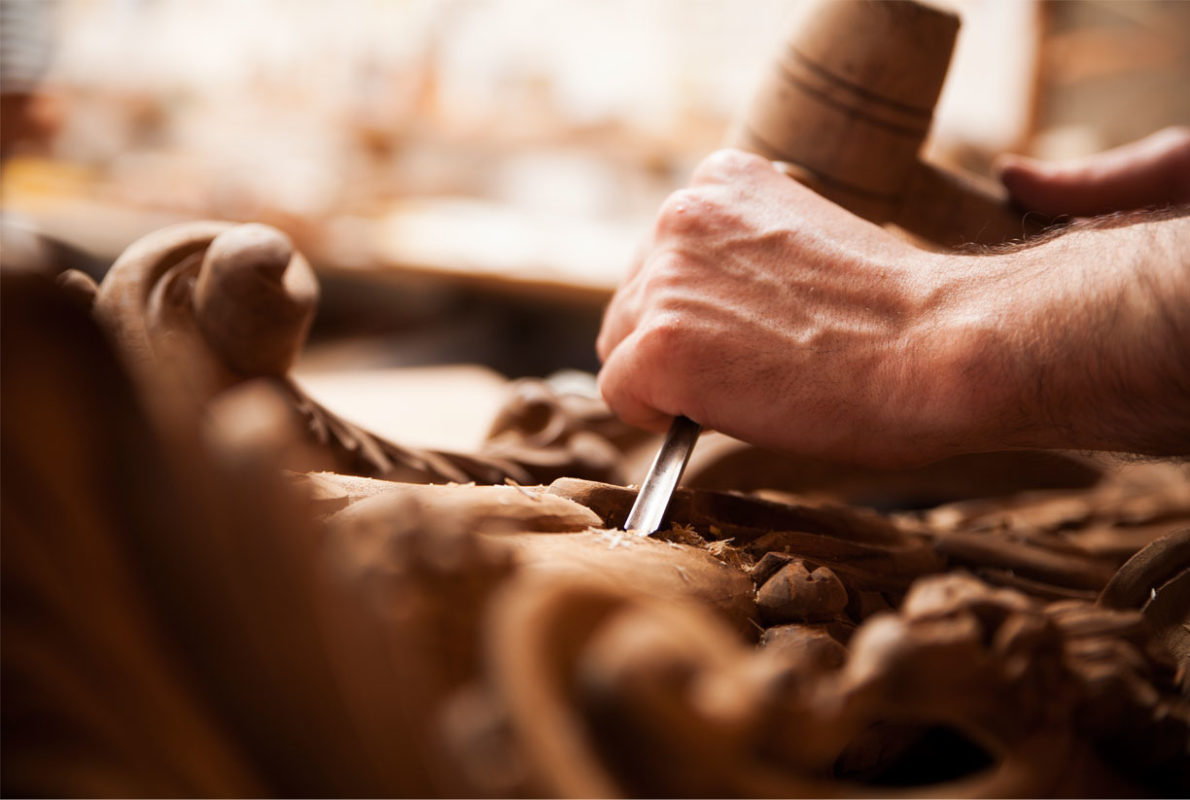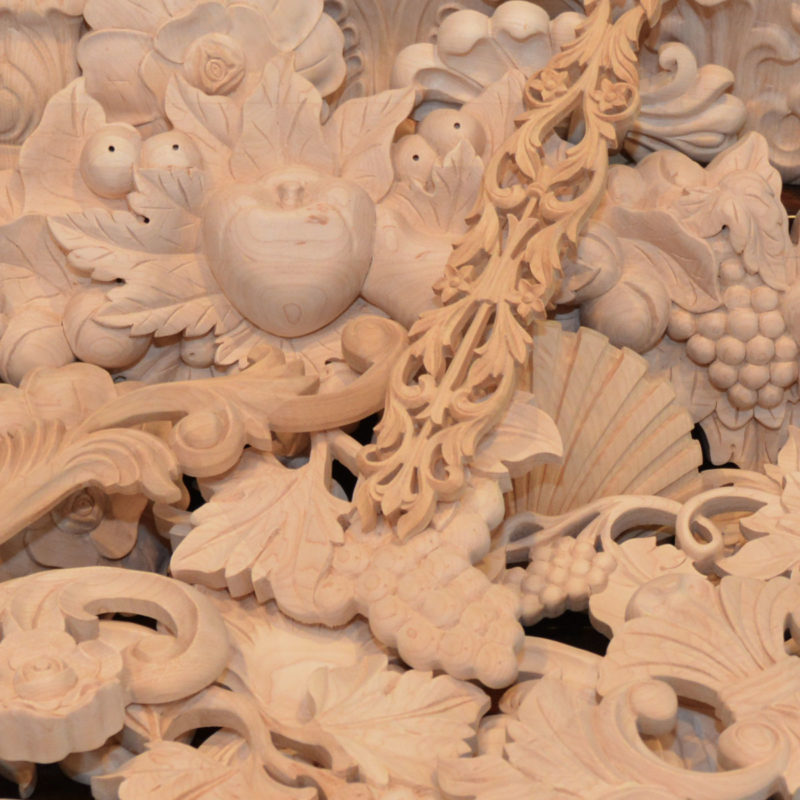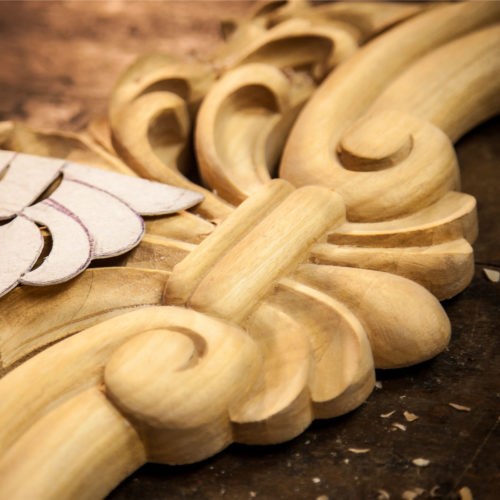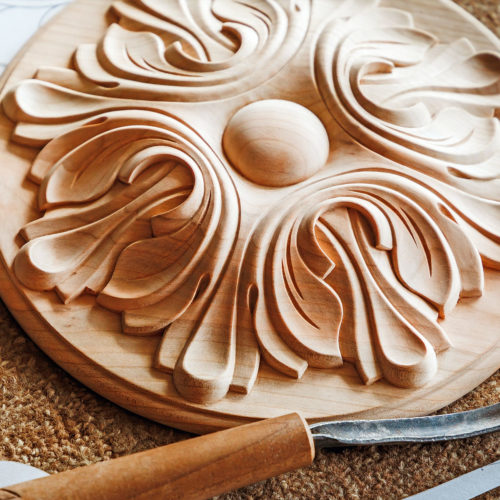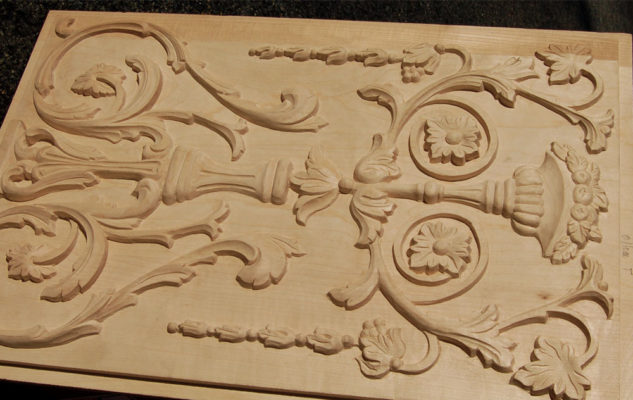The InvitingHome.com Wood Selection Guide
The United States is home to over 1,000 species of trees. Of these, only a select few are used in crafting wood corbels and other carved wood products.
At InvitingHome.com, our corbels are all made from select hardwoods, which are durable but also pliable enough for woodworking. Our Wood Selection Guide takes a look at seven hardwood species: alder, beech, cherry, hard maple, oak (red and white), poplar and white hardwood.
Which is the right wood species for your corbels? It’s not always an easy choice. But our Wood Selection Guide can help you pick the best wood for your home improvement project, with a particular eye toward corbels. Whether you’re a homeowner, designer or builder, we hope you find this guide to be a valuable resource.
Alder

Alder, a hardwood grown in the Pacific Northwest, is a common choice for corbels as well as cabinetry and furniture. This wood is prized for its consistency in color and ability to take stain well – two factors to keep in mind if you’re considering alder wood corbels.
A beautiful wood that is growing in popularity, alder is relatively soft compared with other hardwoods and thus easy to work with. It features graining and rich tones that are similar to cherry, but at a much lower price tag. (Note: Alder wood corbels are a new addition to the InvitingHome.com catalog.)
Beech

Beech is a cream-colored hardwood that grows primarily in North America and in parts of Europe. Perhaps best known as the wood used in baseball bats, beech is also found in wood corbels and hardwood floors.
Three factors that make beech a popular choice for corbels: It takes stain well, is easy to work with and has an excellent finish. (Note: Beechwood corbels are a new addition to the InvitingHome.com catalog.)
Cherry

A perennial favorite among homeowners, cherry has been used by furniture-makers for literally thousands of years. This beautiful hardwood brings a classy touch to wood brackets, flooring, cabinetry, butcher block countertops, and other home furnishings.
Strong and relatively hard, cherry is known for its durability. But its beauty is the primary reason it’s so often chosen for corbels. Initially light brown in tone, cherry gradually darkens over time to display warm, reddish-brown hues. And if you’re looking to add a special touch to your cherry corbels, this wood looks spectacular when finished with a clear polyurethane varnish.
Hard Maple

Whatever your family can dish out, hard maple can take it. This wood is used in flooring and even cutting boards, so you know it’s more than tough enough for corbels. Its hardness and stiffness make hard maple more challenging to carve, but these features also enable crisper detail and more intricate carving motifs.
Hard maple generally has attractive graining that adds life to corbels. A relatively clear wood that ranges from light brown to creamy tan in color, it takes nicely to natural or light finishes. Honey brown stain tends to complement hard maple corbels particularly well.
Oak (Red and White)

Oak, the most abundant hardwood species in the United States, has been a favorite of craftsmen for hundreds of years. Very hard and durable, oak is a popular choice for corbels, cabinets, floors and many types of furniture. The species comes in two basic varieties: red and white.
Both red and white oak stain beautifully in almost any color and sport distinctive grain patterns ranging from straight lines to wide arcs. Red oak, the more common of the varieties, has a pinkish tint and open grain pores. White oak has a slightly greenish hue and smaller pores.
Poplar

Poplar trees can reach heights of 150 feet, making them the tallest of all U.S. hardwood species. Prized for its durability, the wood is used in corbels as well as kitchen cabinets, molding, and doors. You’ll also find poplar in many musical instruments.
Poplar is pale yellow to white in color with a greenish tint in the sapwood and open grain pores. It stains well across a range of colors (including a honey tone with darker colors) and holds paint quite nicely too. A reasonably priced option when choosing a wood for your corbels.
White Hardwood

White hardwood, or basswood, is used for wood corbels, molding, furniture, and even Venetian blinds and shutters. In terms of appearance, this wood is relatively plain: very light cream in color with little to no grain.
What makes white hardwood stand out – particularly for crafting corbels – is that it’s so easy to work with. The softness and straight grain of white hardwood make it the ideal carving wood. It also takes well to paint or a polyurethane finish.
Summary
InvitingHome.com offers a wide variety of corbels, most of which are available in three or more wood species. The type of wood is just one thing to consider when looking at corbels; you’ll also want to factor in style and application. Click here to start reviewing our selection of wood corbels.

